My Lost Watch, an Endless Quest to Find a Perfect Daily Beater and a Personal Tale about the Seiko Sea Horse
Sometimes, the simplest things can be the most difficult to get...
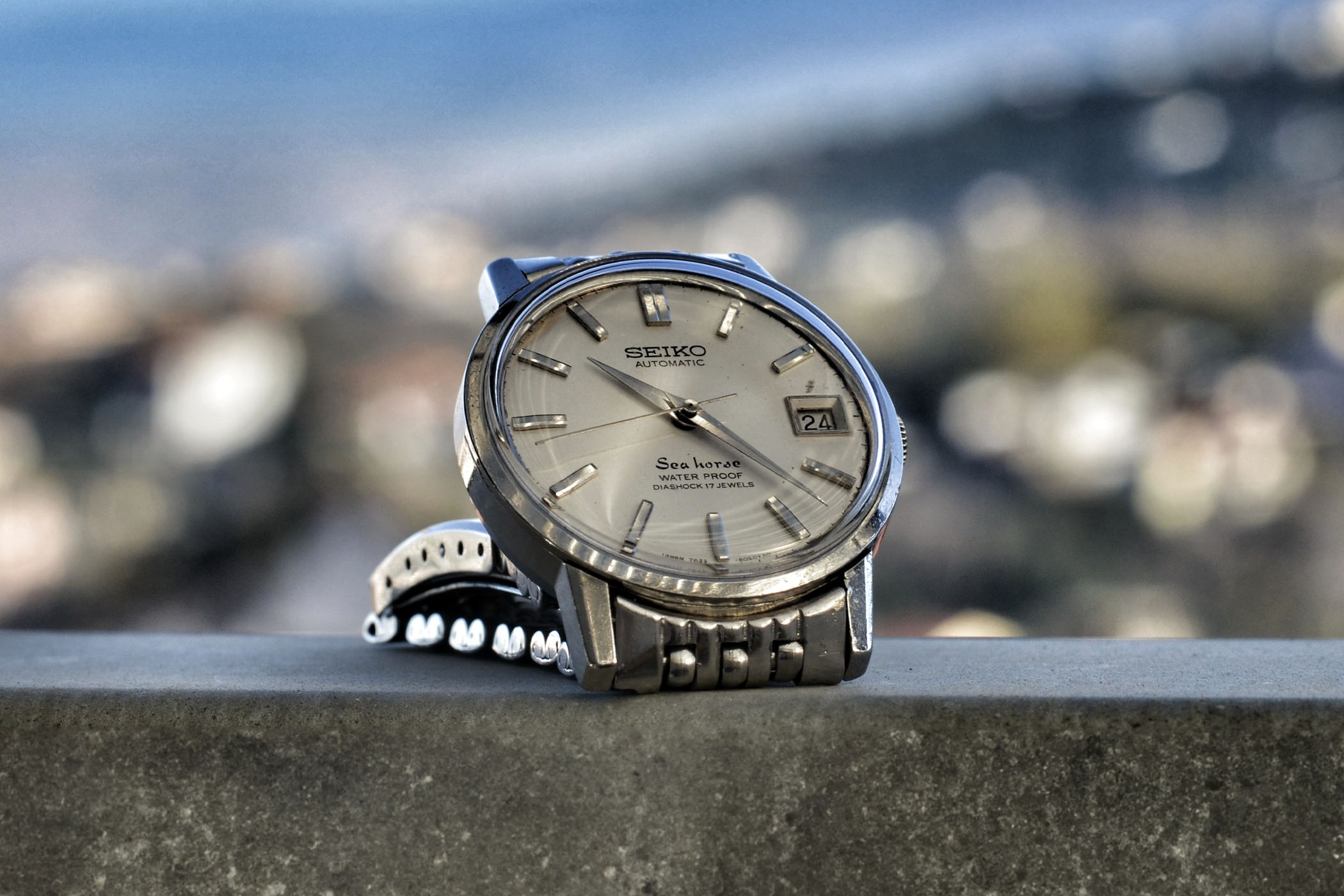
We, at MONOCHROME, rarely publish so-called “guest posts” and prefer to use our Collector’s Series as a platform to share our readers’ adventures with a watch. Today, we had to make an exception. The reason is simple. The story was just too good to not be shared. It tells a tale about a watch, something highly personal that, in some ways, will speak to a lot of us, watch enthusiasts. This man, whom we will call “Sweeny Hands” (as he prefers to remain anonymous), spent years searching for his ideal watch. Contrary to many stories you’ll hear from collectors looking for bright and shiny new complications, Sweeny’s search seemed simple at first, but ended up being an almost endless, desperately impossible quest. And here’s the story of his long-awaited Seiko Sea Horse 7625-8031.
Some watch collectors are dragons, hoarding the glitter for the sheer joy of sitting on it. Others are magpies, gathering a little of everything to build a nest where they feel safe. The loneliest are the squirrels. They root around on the ground all day. It looks like they are looking for pine nuts, but pine nuts are everywhere. What they are looking for is a pine nut-shaped dream, an ethereal ideal that they have convinced themselves exists somewhere on the vast forest floor.

Several years ago, I turned into a squirrel on a mountain ridge called Devil’s Backbone. It was a hot summer weekend. For hours, I trekked on the bare, rocky mountain with a heavy backpack. My face was caked in dirt. Sand wedged between my buttocks. Near sunset, what was left of me collapsed in a puddle of sweat on my car seat. Home was three hours away. I looked down at my wrist. Instead of my watch, there was just a strip of pale, exposed skin.
The next day, I drove back to the mountain and climbed it again. I turned over every rock, looked into every shrub, but all I found were pebbles. Until I lost it, I never gave my watch much thought. After it was gone, it was all I could think of. That evening, I went online, intending to replace my lost watch with something identical. It was then that I realized how little I knew about my watch. I remembered it had a round, white face, a steel bracelet, and was probably from Japan. My aunt bought it for me during a business trip. I did not know its brand, its size, not to mention its reference number.
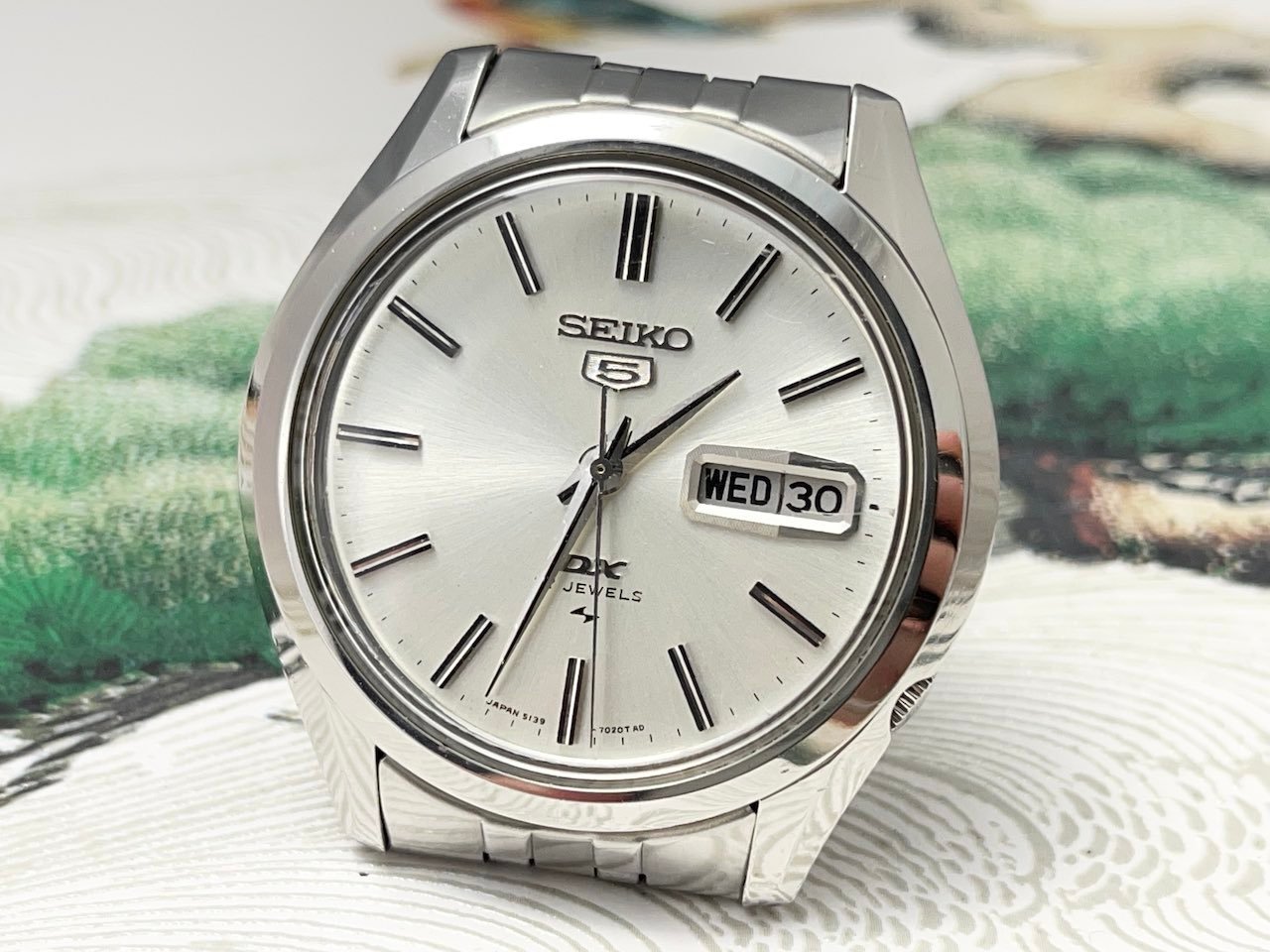
I thought that if I ever encountered it again, I would surely recognize it. I scrolled through endless white, round watches online. The more I looked, the blurrier my memory became. From time to time, I would be convinced that I finally found it. A sense of hope swelled up in my chest, gradually expanding until the day the watch arrived. I would cut open the cardboard box, unwrap the bubble pack, and inevitably, something would go wrong. The watch would be too wide, too thick, or too heavy. Just like that, my hope whooshed out and the search started over, again.

For months, I bought and returned one watch after another. To broaden my search, I started frequenting watch websites, thinking that I would not only forage currently available watches, but all watches that ever existed or rumoured to exist. On these websites, watch people discussed watches with a warped logic that only made sense to other watch people. They claimed watches as an investment, but often sold their watches at a loss just so they could buy more. In their quest for one Go Anywhere Do Anything (GADA) watch, some ended up acquiring dozens of watches. Others fantasized about having a well-rounded collection, a watch for every adventure in life, but they spent all their adventure funds on buying watches already.
Most watch people are prompted by an obsession to savour the endless variety the objective watch world has to offer. It is curiosity that propels them to chase after the beautiful and the unusual. On the contrary, I was compelled by my own subjective and unchanging ideal of a watch in all watches, my lost watch, an object that could not be described, but only recognized. Others looked at watches. I looked for myself.
In front of people, I do not talk about watches. In fact, most of the time I wore a cheap digital watch, as my work occasionally involved being elbow-deep in blood and excrement. Late at night, when I was alone, my face lit up by the laptop, I spent hours looking at enlarged watch photos, mesmerized by the blued screws, the pulsating escapement wheel, and glittering metal plates decorated with stripes, spirals and swirling fleur de lis. Each watch is a lively microcosm of order, harmony, and repose, tucked inside a tiny metal case.
At some point, I stopped pretending I was still looking for the lost watch. My search turned into a quest for everything I wished I could get back in my life. I was at an age where my future was no longer a blank canvas, but the remainder of a book that had been put aside. For the third time in five years, I left everyone I loved and became a stranger in a new city. Most of my classmates have families and respectable careers. I was working eighty hours a week and barely making more than a line cook. I never got over my hump. I just got used to living on it.
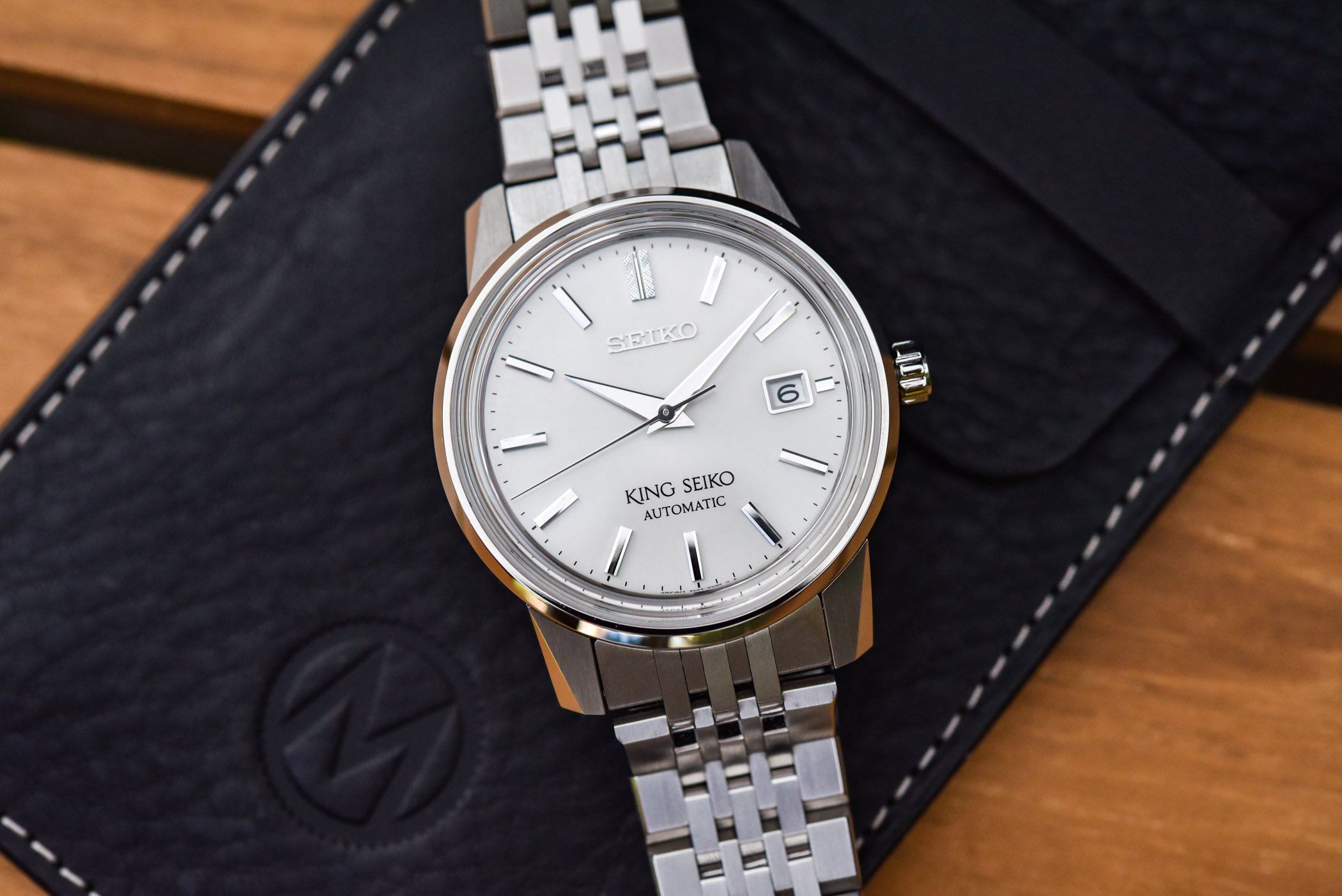
The watches that interested me were becoming more and more similar, like dots on a plot converging toward a blank space. They were tiny, simple dress watches. I adored silver stick indices on a plain white dial, the thoughtful arrangement of sharp angles and reflective surfaces, and the impractical elegance of prioritizing sparkle over legibility. I was also drawn to broad, dauphine hands, a design that is now rare because it made no sense to waste battery power pushing these heavy hands. Half a century ago, such watches used to be ubiquitous. Nowadays, they are hard to find, especially one where all the features come together harmoniously. Some would have the right dial, but the wrong hand. Another would tick all the boxes but was a few millimetres too large. I was on a quest for a watch I dreamed up, but I neglected to check whether it existed in the first place.
Then one day, a picture popped up on an amateur British watchmaker’s blog, a vintage Seiko with broad dauphine hands, simple rectangular indices, and a neat, white face: a Seiko Sea Horse 7625-8031. It was a stoic, beautifully balanced watch, which, until then, only existed in my imagination. The watchmaker had overhauled it and was selling it for the price of a fancy dinner, and I had no one to dine with.
Unlike every watch before it, the Sea Horse did not disappoint. I stopped looking at other watches, because I had found what I was looking for. On a matte white dial, raised rectangular batons marked the hours, with a double-baton at 12 o’clock and a framed, recessed date window at 3 o’clock. The SEIKO logo was crisply printed in geometric slab serif. Below, in the same font, it read “Water Proof, Diashock 17 Jewels.” I especially enjoyed the “Sea horse” descriptor. Its funky calligraphy added an element of whimsy to the otherwise sterile dial. Despite the numerous details, the overall appearance gave an impression of clean symmetry and effortless elegance, bringing me back to a simpler time whenever I gazed at it.
Holding the watch in my hand is a rich tactile experience. With the gentlest tilt of the palm, I could detect the spinning rotor through a subtle shift in its weight, followed by a rapid tug and pull as the rotor oscillated inside the tiny metal case. I especially enjoyed running my finger over its surface, the cold metal back, bulging like the belly of a fugu, and the calming warmth of the raised acrylic crystal. Without thinking much about it, I wore the watch everywhere I went. It required no protection, just as we don’t protect particular parts of our own bodies. The watch was a part of me, even before I knew that it existed.
Then one morning, several months later, I had a quiet morning to myself. I made tea, sat myself on one of my two chairs, and picked up a mathematics book. Every time I turned the page, I heard a strange, whirring noise. I tried to ignore it and read on, but the noise was making it impossible to concentrate. It sounded like someone rubbing two knives against each other along the sharp edges. I stood up and shook my fleece jacket, suspecting that the zipper was snagged on something. There it was again, whoosh-whir-whir-whir. I shook my hands in the air, whoosh-whir-whir-whir, and brought my wrist to my ear. It was the noise of the spinning rotor, which I never noticed before. I put down my book, turned on my computer, and started looking for a white, round watch without a rotor.
The featured image at the top of this article was sourced from orologi.forumfree.it and made by member “Nike90” – Other images were found at www.watchpatrol.net.


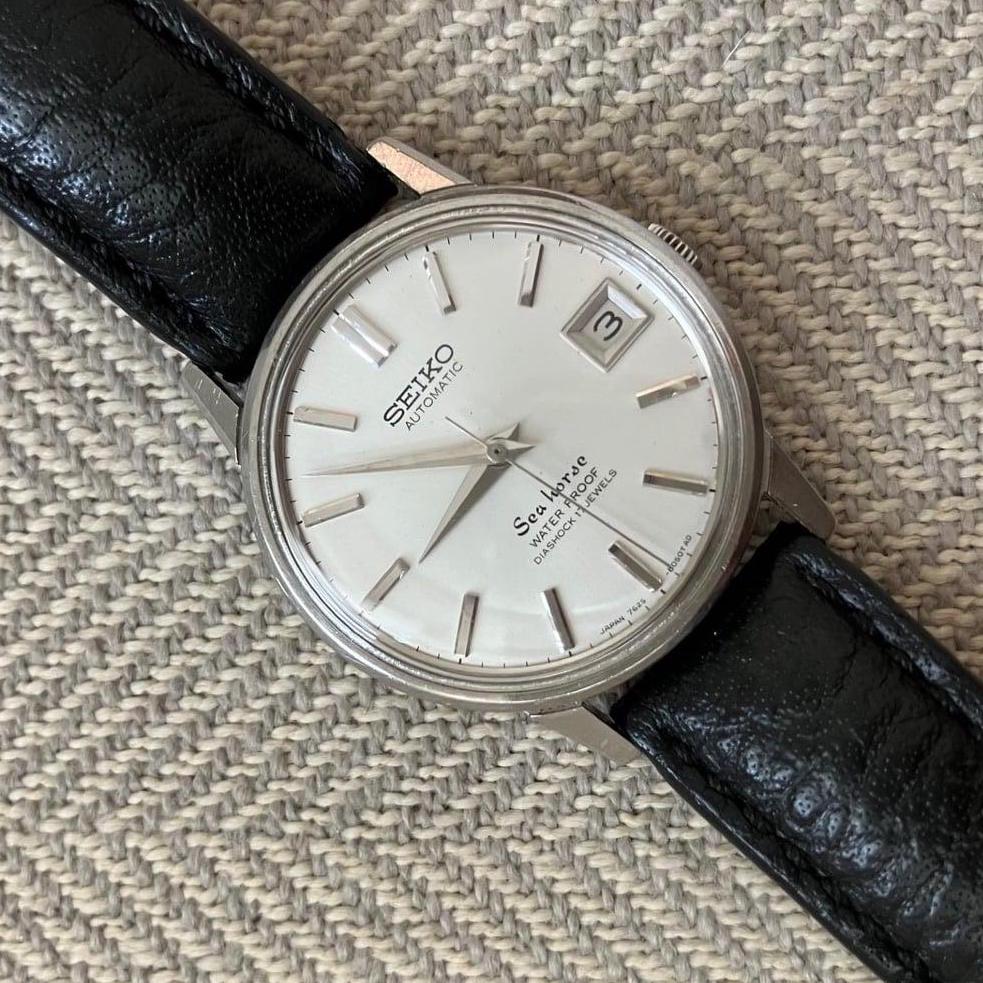
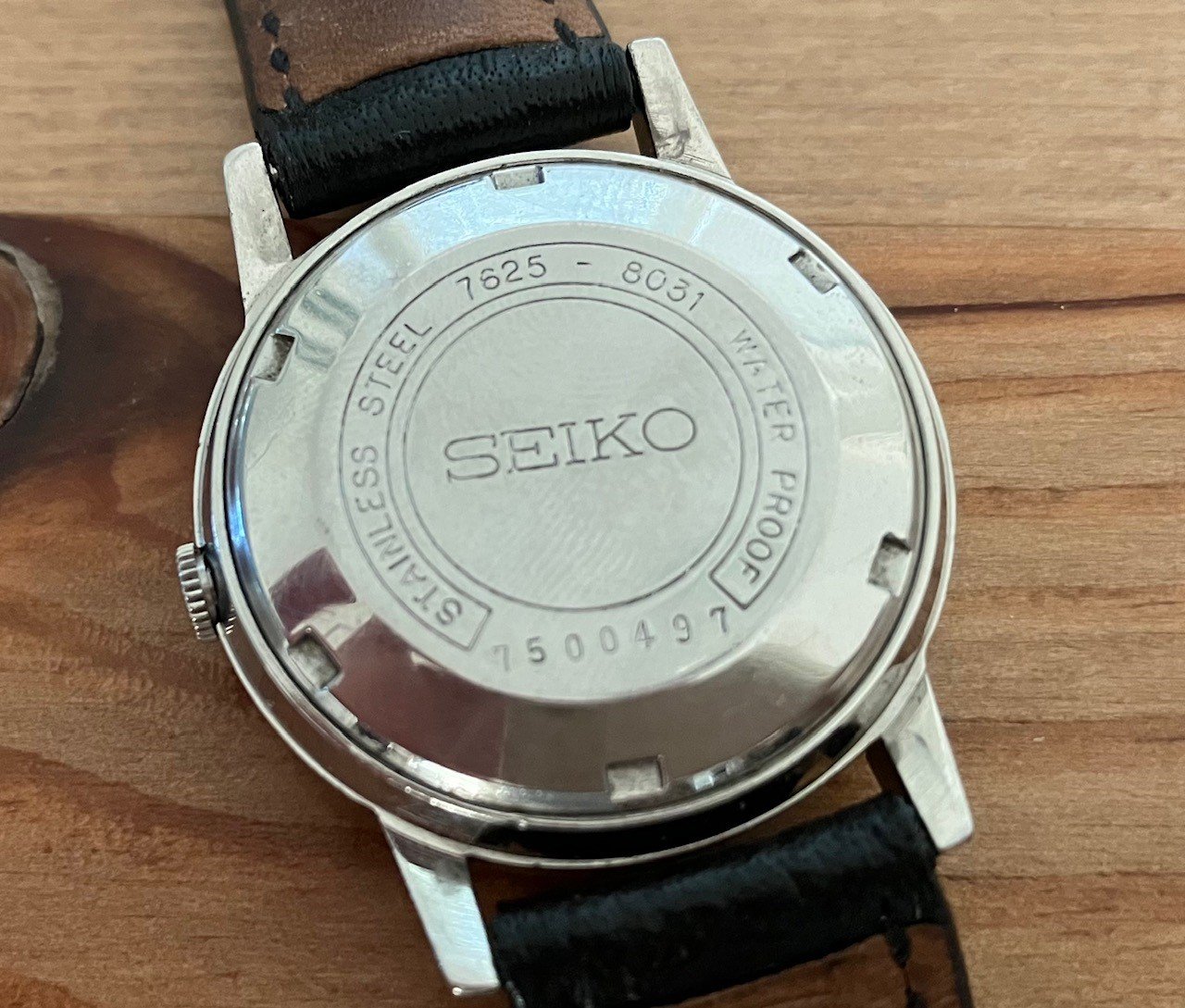




12 responses
I wish there were more stories like this on Monochrome!
These stories are great. I organize similar ones at itscasualtime.com if folks want to share.
This man needs to buy an SBGW231 or an SBGX263.
love the displayed selection of watches
Fabulous article that encapsulates the joy, despair, and joy revisited of the watch lovers world. To me Seiko’s epitomise the 1960’s more than any other watch, including Rolex. The Henry Ford Model T of the 1960’s watch world perhaps?
I’d take the watch off of him for the price of a fancy dinner..
Great story … I want more stories like this one. Real watch lovers!!!
Don’t know when will Seiko will have this classic Sea horse in its roadmap at the soonest
Great writing, but this man needs more experience lol. He didn’t realize at first the rotor makes a sound? What a rookie.
These watches are hard to find and may be costly
I can relate completely to the search for the perfect watch,I too am on the journey,brilliant article
He’s not wrong, the seahorse is loud as.